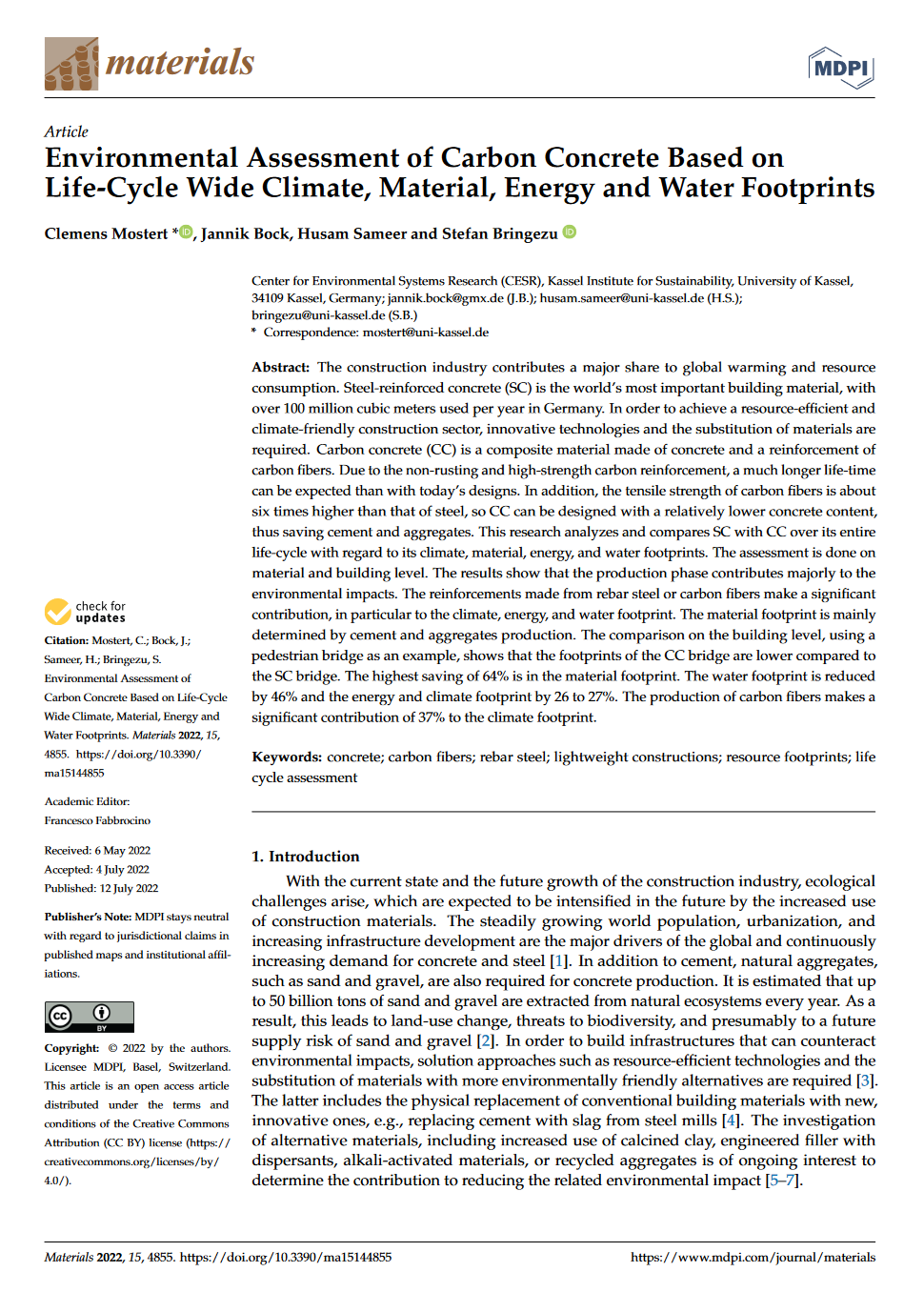The construction industry contributes a major share to global warming and resource consumption. Steel-reinforced concrete (SC) is the world’s most important building material, with over 100 million cubic meters used per year in Germany. In order to achieve a resource-efficient and climate-friendly construction sector, innovative technologies and the substitution of materials are required. Carbon concrete (CC) is a composite material made of concrete and a reinforcement of carbon fibers. Due to the non-rusting and high-strength carbon reinforcement, a much longer life-time can be expected than with today’s designs. In addition, the tensile strength of carbon fibers is about six times higher than that of steel, so CC can be designed with a relatively lower concrete content, thus saving cement and aggregates. This research analyzes and compares SC with CC over its entire life-cycle with regard to its climate, material, energy, and water footprints. The assessment is done on material and building level. The results show that the production phase contributes majorly to the environmental impacts. The reinforcements made from rebar steel or carbon fibers make a significant contribution, in particular to the climate, energy, and water footprint. The material footprint is mainly determined by cement and aggregates production. The comparison on the building level, using a pedestrian bridge as an example, shows that the footprints of the CC bridge are lower compared to the SC bridge. The highest saving of 64% is in the material footprint. The water footprint is reduced by 46% and the energy and climate footprint by 26 to 27%. The production of carbon fibers makes a significant contribution of 37% to the climate footprint.


